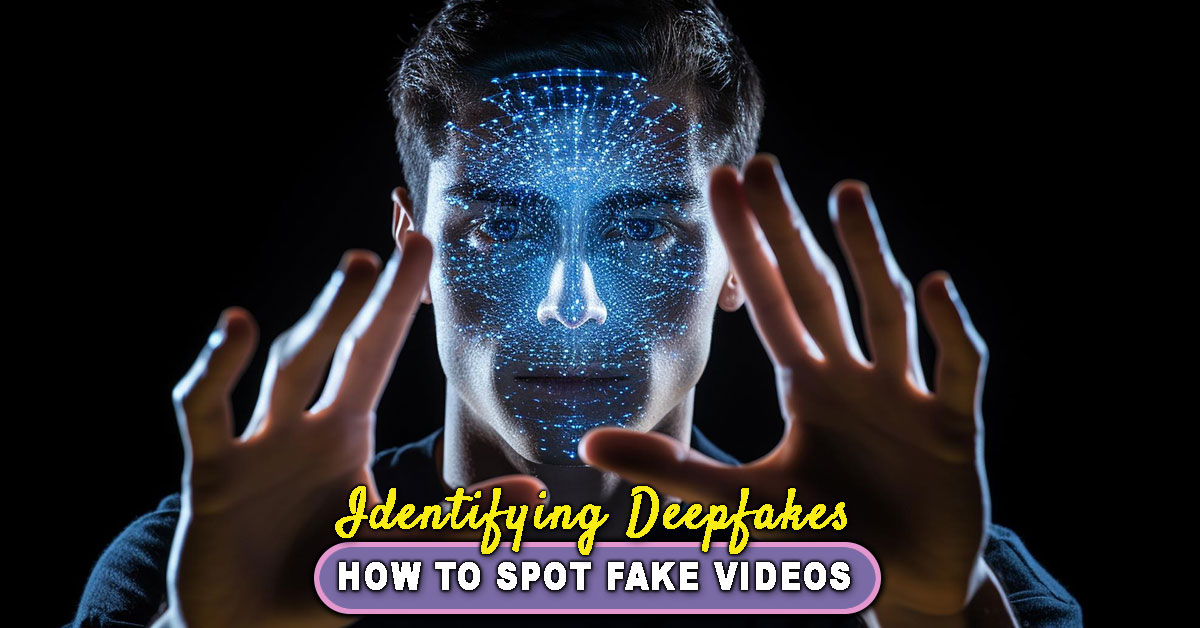Have you seen that viral video of Tom Cruise doing a magic trick or Barack Obama cursing up a storm? Chances are pretty good those were generated with Deepfake Artificial Intelligence. Ultra-realistic fake videos made using AI.
We are in an era of advanced technology. And distinguishing between real and fake videos is very crucial. The rise of scams and fake video calls poses new challenges to online authenticity. The use of deepfake technology is alarming. But don’t freak out just yet. You’ve still got the skills to spot these fake scams. Before you go for social media share, take a beat and look for the signs.

With a bit of intelligent work backed with awareness, you can avoid becoming another pawn. Scamsters, with the deepfake disinformation campaigns are trying to manipulate all of us. Staying vigilant and checking the details will help you identify the fakers.
Keep reading to pick up the tricks of the deepfake detection technology. The truth is still out there – you must know where to look.
Also Read:
- The Future of Coworking: 10 Trends That Will Shape 2024
- Artificial Intelligence (AI): Revolutionizing Wealth Accumulation
- Wedding Season Splurge: How India’s Big Fat Weddings Are Boom for Retail Industry
What is deepfake artificial intelligence
The Rise of Deceptive Digital Realities. Deepfake artificial intelligence leverages advanced deep learning techniques. The main motto is to manipulate images, audio, and video . They generate convincing yet entirely fabricated content.
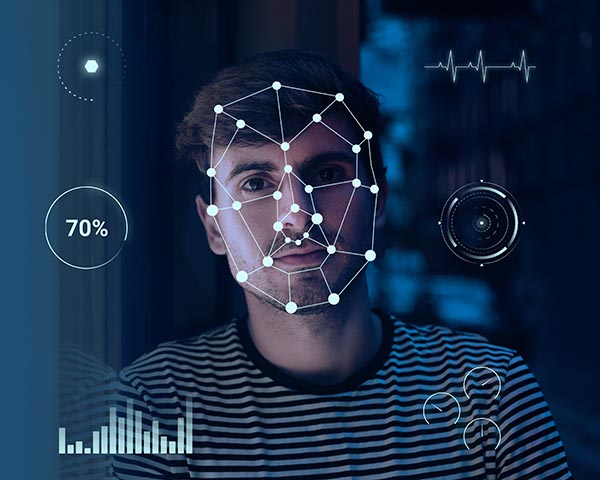
A new crisis is emerging due to deepfakes produced through artificial intelligence. There is a very big section of society which does not have a parallel verification system
PM Narendra Modi
By amalgamating sophisticated algorithms, these creations can replace one person’s likeness with another. Raising concerns about misinformation, identity theft, and the ethical implication. All evolving AI technology.
Harsh Reality: When Did Deepfakes Start?
In the mid-2010s, the deepfake actors propell by advanced deepfake AI bot technology,. Marks a transformative era in synthetic media. To discern authenticity from manipulation, delve into the roots of deepfakes. Scrutinize metadata and source details. Question the uploader’s credibility, verify upload dates, and cross-reference with reputable sources. Understanding its origins and employing vigilant verification tactics. Becomes pivotal in navigating the intricate web of synthetic realities. As this deceptive technology evolves.

The Dark Side of Deepfakes: Diverse Threats Unveiled
Scams and Hoaxes:
Cybercriminals exploit deepfake technology to orchestrate scams and hoaxes. Crafting false videos of executives admitting to crimes or making damaging claims. The repercussions extend beyond financial losses. Tarnishing the organization’s reputation and brand. Potentially impacting public perception and share prices.
Celebrity Pornography and Revenge Porn:
Deepfake’s alarming potential includes the creation of nonconsensual pornography, primarily targeting celebrities. Moreover, the technology fuels revenge porn hoaxes. Amplifying concerns about privacy violations. And the lasting damage caused by fabricated explicit content.
Election Manipulation:
The ominous spectre of deepfake videos manipulating political landscapes emerges. As seen in the spread of fabricated videos featuring world leaders like Donald Trump and Barack Obama. The threat of election interference looms. As these convincing videos can sway public opinion and disrupt democratic processes.
Social Engineering Scams:
Within social engineering scams, audio deepfakes deceive individuals. They are made to believing false statements from trusted figures. Instances include CEOs falling victim to deepfake voices impersonating executives. Thus leading to large financial losses through fraudulent transactions.
Automated Disinformation Attacks:
Deepfake becomes a weapon for spreading automated disinformation attacks. And disseminating conspiracy theories and false narratives. Notable instances include a fake video featuring Mark Zuckerberg. He is shown claiming control over vast amounts of user data. Illustrating the potential for deepfakes to manipulate public perception.
Identity Theft and Financial Fraud:
Deepfake technology extends its reach to identity theft and financial fraud. Enabling the creation of false identities and the impersonation of real individuals. Attackers exploit the technology to fabricate documents. And mimic victims’ voices, facilitating unauthorized account creation and fraudulent purchases.
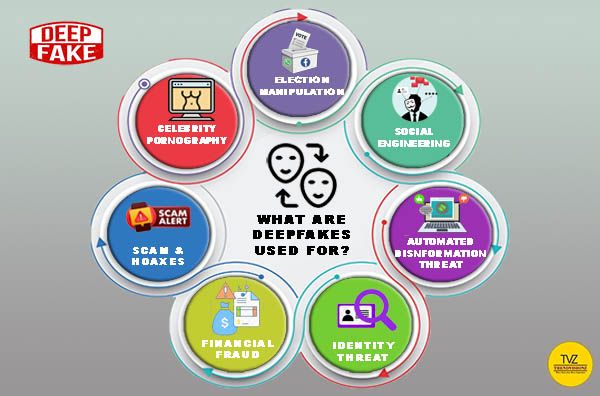
In the intricate web of digital deception, deepfakes emerge as versatile tools. Threatening the foundations of trust, privacy, and democratic processes. Awareness and vigilance become paramount in navigating this evolving landscape. As the potential for harm expands across various sectors and facets of society.
Alarming Rise of Fake Videos and Audio
With AI getting more innovative, “deepfakes” — highly realistic fake videos and audio. Are becoming increasingly common. As alarming as this trend sounds, there are still ways to spot them.
Stay sceptical. If something seems too outrageous or inflammatory to be accurate. It may have been faked very well. If something seems too good to be true, it generally is. Follow your own instincts.
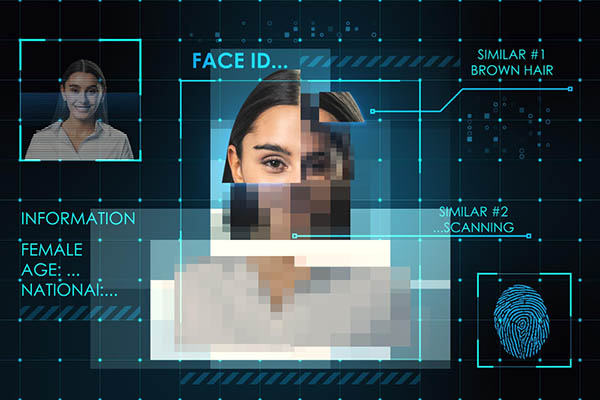
You can spot the fakes with a critical eye and a healthy amount of scepticism. The truth is still out there; you must know where to look.
Generative AI in the Workplace: Eight Game-Changing Examples
Artificial intelligence is reshaping operations. And enhancing productivity across various domains in today’s workplaces.
- Streamlined Customer Service: AI-powered chat bots
- Predictive Analytics: Optimize decision-making
- Talent Acquisition: Refined with Machine learning
- Cybersecurity: Benefits from real-time threat detection
- Virtual assistants: Automation in Administrative tasks
- Process Automation: Boosts productivity
- Natural Language Processing (NLP): Enhances communication
- Personalized Learning Platforms: For Individual needs
It’s upto us we use it for good or bad. Choice is ours.
How Deepfake AI Works: Demystifying the Mechanics
Deepfake AI uses advanced machine learning algorithms to analyze & manipulate visual or audio. Seamlessly swapping one person’s likeness with another. This transformative technology has raised concerns about misinformation. Familiarizing oneself with Deepfake detection methods is crucial. In navigating the intricate landscape of synthetic media. Presenting 7 Crucial ways to spot Fake Video
1. How to identify fake video: Unveiling the Deceptive Veil
Deepfakes are getting scary good, but your eyes can still spot the flaws. How to identify fake video: involves keenly scrutinizing visual anomalies.
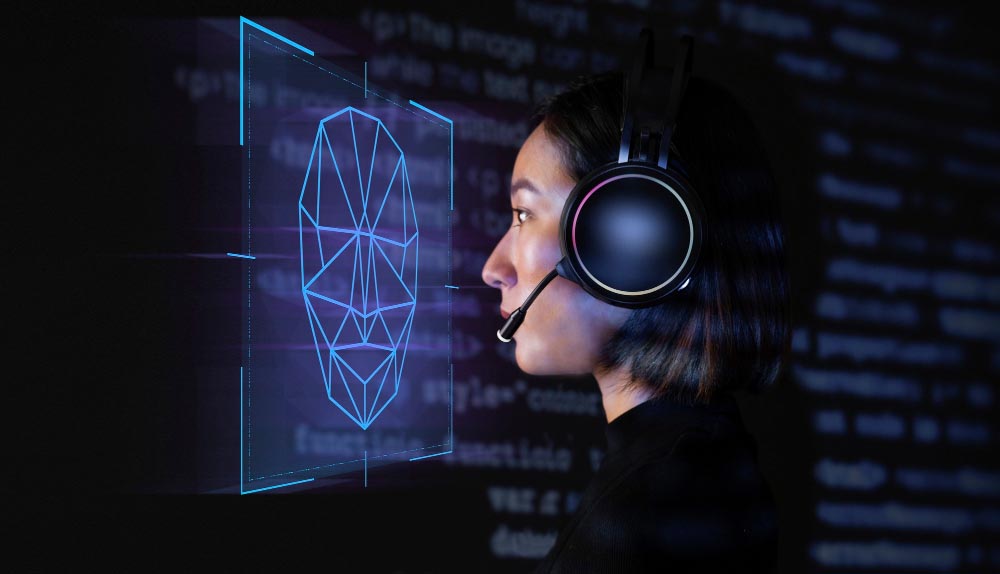
Identifying Discrepancies in Facial Features and Movements
Look for inconsistencies in how the face and features move. In deepfakes, how the mouth, eyes, and facial muscles move often seems slightly off or unnatural.
For example, check if the lips sync correctly with spoken words or if the eyes glance around naturally. Deepfake eyes sometimes seem glassy, unfocused or move stiffly. The person may not blink enough or blink at strange times.
Facial expressions like smiles or frowns may also appear exaggerated, uneven or delayed. If something feels weird or uncanny about how the face moves or expressions change, it could indicate manipulated media.
With some practice, these subtle cues can help determine authenticity. While not a sure way to spot all deepfakes. Inconsistencies state that what you see may have been artificially generated one. As the tech continues advancing, we have to become more discerning viewers. Staying vigilant about the details can help avoid being duped.
Pay Attention to Blurry Areas and Odd Lighting
Pay attention to any areas of the video that look blurry or off. Deepfakes often struggle to replicate details like teeth, hair, or small facial movements. If something looks unnatural or out of place, that’s a sign it could be AI-generated.
Deepfakes may also have odd lighting or shadows that don’t quite match the environment. The effects often appear subtly off since AI must guess how to light and shadow an edited face properly. Look for shadows that seem mismatched or lighting that doesn’t make sense for the context.

Lines around the edges of the face, especially near the jawline, chin, or neck, can also indicate a deepfake. The AI has to digitally stitch the replaced front onto the original, sometimes resulting in visible seams or edges. Pay close attention to the borders of the face for any signs of editing.
With improving tech, deepfakes are getting harder to spot. But you can identify many fraudulent videos and images. Pay close attention to small details, unnatural effects, and apparent signs of editing. Staying vigilant and fact-checking anything. One that seems off remains the best way to combat this new wave of AI-enabled deception.
2. The Impact of Voice Deepfake AI: Deciphering the Echoes of Deception
In deepfake artificial intelligence, the media become increasingly challenging to distinguish. Analyzing audio remains a crucial tool for unveiling deception.
With the availability of a free deepfake ai voice generator. There’s a about rise in scams as deepfake actors exploit these deepfake tools. The ease of access to deepfake voice generators threatens online awareness. Emphasizing the importance of recognizing manipulated voices. To combat the potential spread of misinformation.
The quality of audio often exposes the artificial nature of manipulated content. While deepfake technology advances. Nuances in human speech patterns prove challenging to replicate .
Listening reveals telltale signs of a deepfake. Anomalies such as unnatural speech. Peculiar inflexions, or blatant edits may betray the artificial origin of the audio. Despite the improvements in generating synthetic media. Deepfake algorithms still struggle to capture the natural flow and . One which is inherent in human speech.

Auditory Anomalies: Unveiling Signs of Deepfake Audio Manipulation
Mismatched speech and mouth movements are red flags. Deepfake algorithms, relying on limited training data, may produce slightly off or unnatural audio. Revealing inconsistencies compared to genuine human speech. Strange silences, abrupt changes in background noise. Or challenges in smoothly transitioning between audio clips. Are additional indicators of potential deepfake manipulation.
The auditory clues extend to the speech’s metallic or “robotic” elements. AI-generated deepfake audio may exhibit an overly smooth or unnaturally consistent quality. Lacking the subtle variations and imperfections of natural human speech. Highly emotional or out-of-character speech also raises suspicion. As deepfake algorithms struggle to replicate. The nuanced aspects of a person’s usual speaking style and emotional expressiveness.

Vigilance becomes the shield against deepfake deception. Trusting instincts and noting even minor imperfections in the audio can be crucial. While deepfake technology evolves. Flawed or unnatural-sounding audio remains one of the most reliable manipulation indicators.
Stay informed about common signs . And being proactive in discerning deepfakes empowers individuals. Helping them to combat the spread of misinformation.
3. Unnatural Eye Movement
Watch out for unnatural eye movement or eye contact in the video. Our eyes naturally dart around and blink constantly in real life. In deepfakes, the eyes can appear lifeless or look like they’re staring off into the distance. The person may need to blink more or seem to make direct eye contact with the viewer.
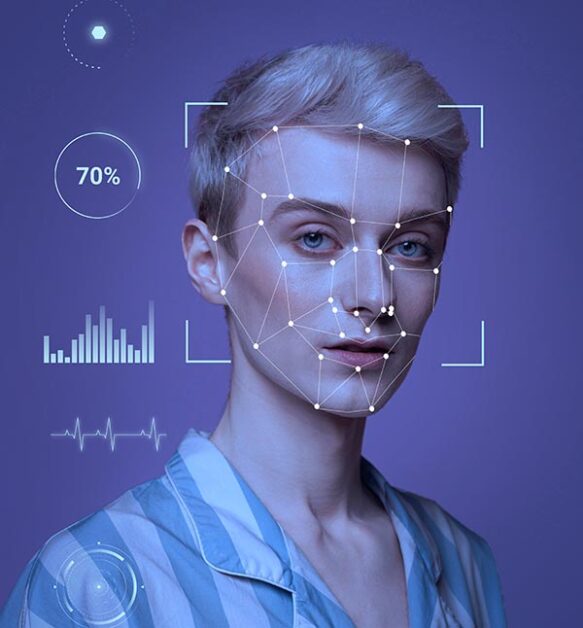
Movements will seem awkward or off. Head turns, facial expressions and mouth movements may appear slightly off or lag behind the audio. These subtle differences are hard to detect but seem abnormal upon close inspection.
Pay attention to the lower face. The jawline and chin area are particularly hard to manipulate in deepfake videos. Look for any warping, blurring or unnatural movement in this region when the person in the video talks or changes expressions.
4. Watch for Unnatural Body Language and Speech Patterns
Watch for unnatural body language and speech patterns. Deepfakes often look slightly “off” . As they have trouble replicating natural human movements and speech perfectly.
- Look for a lack of blinking. Deepfake videos frequently have subjects that don’t blink often enough, if at all. Most people blink every 2 to 10 seconds.
- Check for weird head movements. In deepfakes, the head may not move quite right and seem either stiff or disjointed from the body. Natural human activity is very complex, so deepfakes struggle to imitate it.
- Listen for strange pauses or changes in speech. Deepfake audio can sound unnatural because it’s piecing together different clips. The address may be hesitant, repeat itself, or sound “off”. Our ears are very attuned to human speech, so trust your instinct.
- See if facial expressions match speech. With deepfakes, the facial expressions, mouth movements, and speech often don’t quite sync up. Look for subtle mismatches in timing and intensity. Real human emotions are hard to fake.
- Observe how light and shadows fall on the face. Deepfakes sometimes look flat or off because they have trouble accurately depicting how lighting should fall on a human face. Shadows may seem unnatural or change abruptly.
With practice, these subtle cues can help tip you off to a deepfake. When in doubt, do a reverse image search to double-check the source. Staying sceptical is critical
5. Cross-Verify with Multiple Sources
Cross-checking suspicious videos or audio with multiple independent news sources is one of the best ways to verify their authenticity.
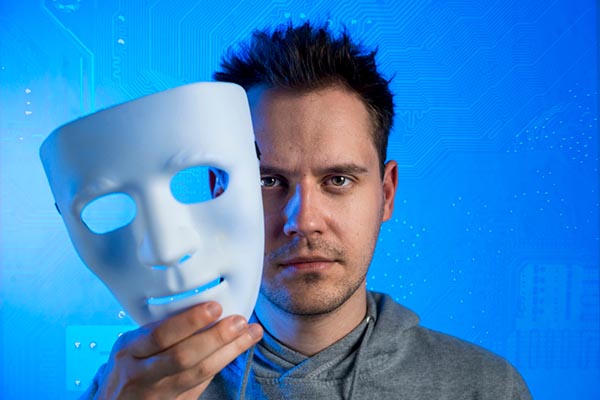
Look for coverage across reputable media outlets.
Search for the video or story on fact-checking websites and reputable news organizations like the Associated Press, Reuters, The New York Times, The Washington Post, etc. If major media organizations have not reported on or shared the video, that’s a sign it could be fake. Legitimate news stories are usually covered across multiple media organizations and newspapers.
Check Metadata and Source Information
In the age of sophisticated deepfake technology, scrutinizing metadata and source information remains a crucial strategy for identifying fake videos.
Ask yourself questions like:
- Who uploaded the video? Are they a reputable news organization or an unknown account?
- Does the upload date match when the events in the video supposedly took place?
- Can you find the exact video posted by other news outlets or witnesses? If not, that’s a red flag.
Checking these details about the video’s origin and upload can help determine if it’s authentic or an AI-generated fake. While deepfake technology continues to become more advanced, metadata and source verification remain among the best ways regular people can spot a phoney.
See if there’s any buzz or discussions about it from others.
Search for the video or audio clip on social media and other public forums to see if many people are discussing it. If very few people seem to be talking about a supposedly major news story or event, that may indicate it’s not real. Deepfakes and hoaxes often fail to gain much mainstream attention or social traction.
6. Look closely for signs of manipulation.
Study the video or audio closely. Look for signs it may have been edited or faked, like inconsistent lighting/shadows, unnatural movements or expressions, mismatched lip movements, distorted or strange-sounding speech, etc. Deepfakes and manipulated media often contain these types of imperfections and artefacts, at least for now. As the tech improves, spotting them may become more complex.
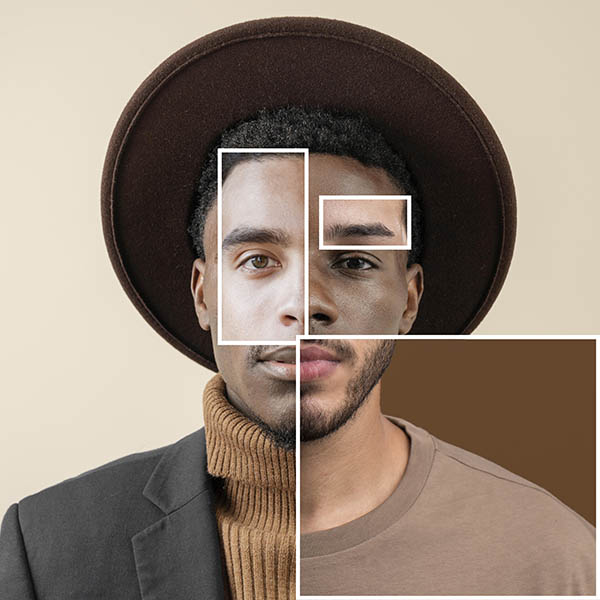
When in doubt, don’t share
If something seems off about a video or story, but you can’t prove it’s fake, it’s best not to share or spread it on social media. Don’t contribute to the spread of potential misinformation. Let the fact-checkers do their job of verifying the truth before believing or promoting dubious media.
7. Unrealistic or Missing Reflections
Pay close attention to reflections of objects and people in videos. Deepfakes often struggle to generate realistic reflections and shadows. Look for a lack of consideration of a person in a mirror or window, a missing shade, or a review of an object that’s not there. The AI systems creating deepfakes have difficulty accurately replicating the complex ways that light bounces and reflects in the real world.

If something looks “off” or unnatural about reflections and shadows, that’s a sign the video could be fake. Trust your instincts—if something feels fake, it probably is. With some practice spotting deepfakes, you’ll better identify these subtle signs of fakery.
Artifacting and Pixelation
Deepfake media often contain subtle visual artefacts that reveal their inauthenticity. Look closely at the edges of objects like hair, glasses or text in the video. If they appear blurry, pixilated or distorted, that’s a sign the video may have been manipulated. The editing software has difficulty replicating fine details, leaving behind these telltale signs.
Images resized or cropped and repositioned can also have a lower quality and a fuzzy appearance. Pay attention to any part of the video that looks slightly off. Your eyes are very perceptive at spotting anomalies. Trust your instincts—if something feels fake, it probably is.
With technology advancing rapidly, detecting deepfakes is becoming more sophisticated and complex. But for now, staying vigilant and looking for subtle imperfections can help you identify falsified videos. If a video exhibits multiple signs of artefacts or seems too bizarre to be accurate, it’s likely an AI-generated fake. Consider the source and see if other reputable news outlets are reporting on it before believing and sharing the content.
Also Read:
India Targets Deepfakes: Stricter Rules and Penalties for Online Platforms
Under new regulations, social media and online platforms risk losing safe harbour immunity. If they fail to promptly combat deepfakes. A move aimed at safeguarding against the emerging threat to democracy.
PM’s Deepfake Concerns
The Prime Minister highlighted the threat of deepfakes, citing a fabricated video of him performing the Garba dance—an act he hasn’t done since school.

Electronics and IT Minister Ashwini Vaishnaw announced government initiatives to regulate deepfakes, synthetic media mimicking authentic content. Following discussions with social media and tech representatives, consensus emerged on the imperative need for decisive action.
Focusing on detection, prevention, and a robust reporting mechanism. Penalties for creators and platforms are under consideration. Signalling a comprehensive approach to tackle the harmful impact of AI-generated content.
Also Read:
- Sustainable Growth: Is India’s Circular Economy Driving a Resurgence in Green Jobs?
- What’s Next for Bollywood?: The Upcoming Movies on the Horizon
Conclusion
That covers the 10 ways to spot fake videos and audio. While technology continues to advance rapidly, deepfakes are still in progress. Pay close attention and trust your instincts – if something feels off about a video or audio clip, it probably is. You have the power to determine what’s real and what’s manipulated. Spot the tells, consider the context, and don’t spread anything suspicious. We all must work together to identify deepfakes and stop the spread of misinformation. You’ve got this! Stay vigilant and let the truth be your guide.
Our Digital Imprints:
Anuj Mahajan is a Mass Communication Specialist,
ICF Certified Coach & Corporate Trainer. Motivational Speaker / NLP Lifecoach.
Chief Operating Officer: Nuteq Entertainment Pvt Ltd, and
Co-Founder: Trendvisionz – A Premier Digital Marketing Agency in India
Get Connected to us with our Newsletters-Transforming Lives… Creating the magic. Just – Believe ~ Practice ~ PerformBizTech Chronicle… Navigating Tomorrow’s Tech Frontiers 🚀
Join my LinkedIn Group: Digital Marketing, Content Creation World Group
Follow me on Twitter or LinkedIn. Check out my website.
